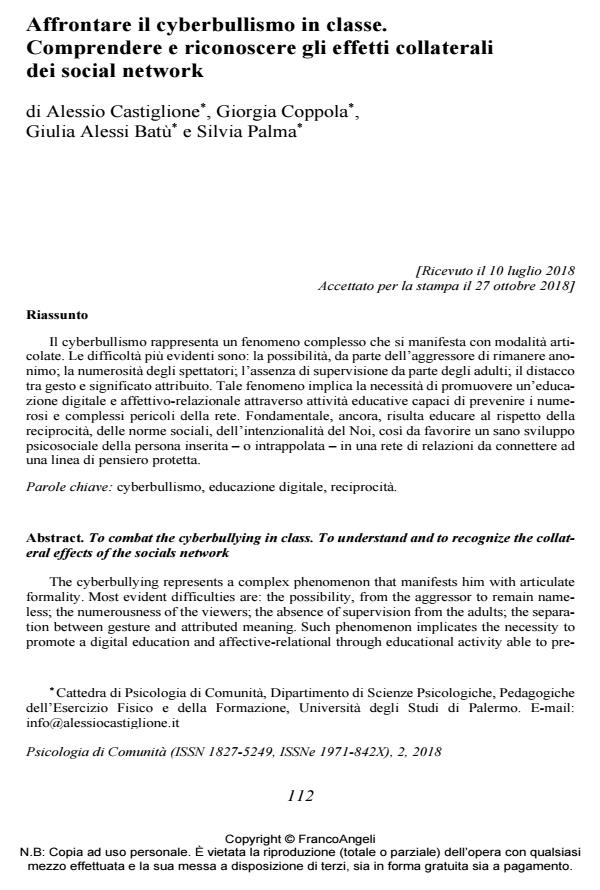To combat the cyberbullying in class. To understand and to recognize the collateral effects of the socials network
Journal title PSICOLOGIA DI COMUNITA’
Author/s Alessio Castiglione, Giorgia Coppola, Giulia Alessi Batù, Silvia Palma
Publishing Year 2018 Issue 2018/2
Language Italian Pages 8 P. 112-119 File size 140 KB
DOI 10.3280/PSC2018-002010
DOI is like a bar code for intellectual property: to have more infomation
click here
Below, you can see the article first page
If you want to buy this article in PDF format, you can do it, following the instructions to buy download credits

FrancoAngeli is member of Publishers International Linking Association, Inc (PILA), a not-for-profit association which run the CrossRef service enabling links to and from online scholarly content.
The cyberbullying represents a complex phenomenon that manifests him with articulate formality. Most evident difficulties are: the possibility, from the aggressor to remain name-less; the numerousness of the viewers; the absence of supervision from the adults; the sepa-ration between gesture and attributed meaning. Such phenomenon implicates the necessity to promote a digital education and affective-relational through educational activity able to prevent the numerous ones and complexes dangers of the net. Fundamental, it still results to educate to the respect of the reciprocity, of the social norms, of the intentionality of the Us, so that to favor a healthy development psyco-social of the inserted person ‒ or trapped ‒ in a net of relationships to be connected to a line of thought protected.
Keywords: Cyberbullying, digital education, reciprocity.
- Virtual Communities of Practice for generations Z and Alpha: a systematic review of the main social networking sites used in formal education Alessio Castiglione, in Research on Education and Media /2025 pp.28
DOI: 10.2478/rem-2025-0004
Alessio Castiglione, Giorgia Coppola, Giulia Alessi Batù, Silvia Palma, Affrontare il cyberbullismo in classe. Comprendere e riconoscere gli effetti collaterali dei social network in "PSICOLOGIA DI COMUNITA’" 2/2018, pp 112-119, DOI: 10.3280/PSC2018-002010